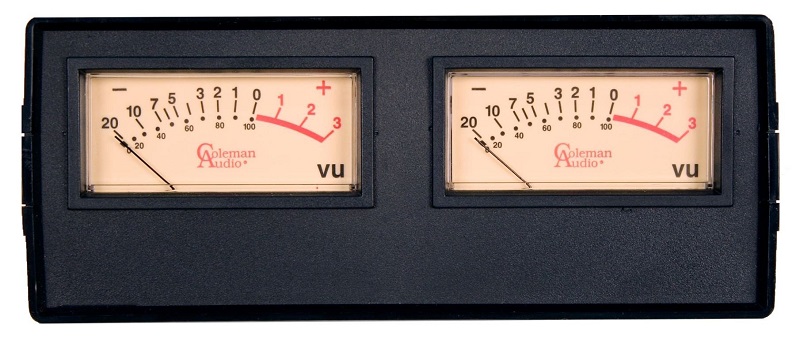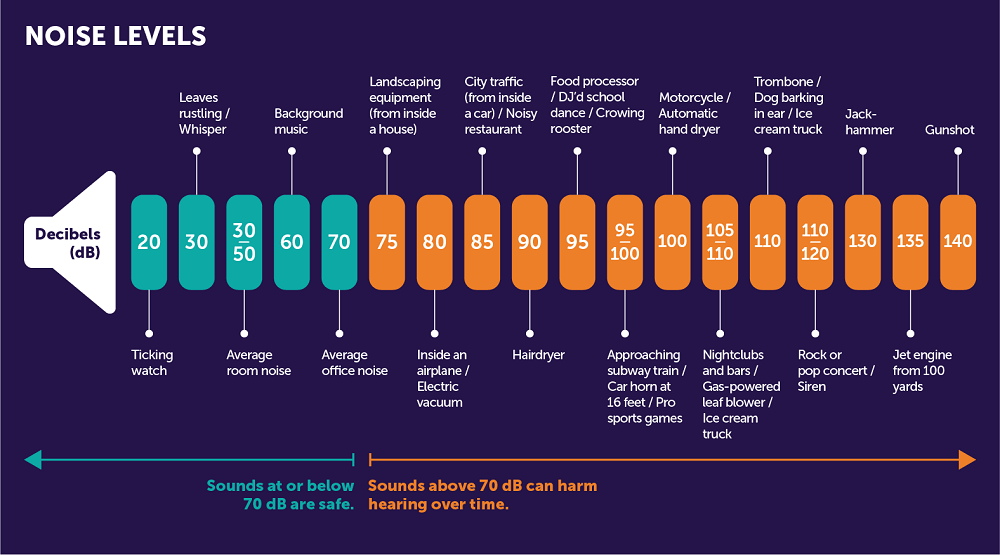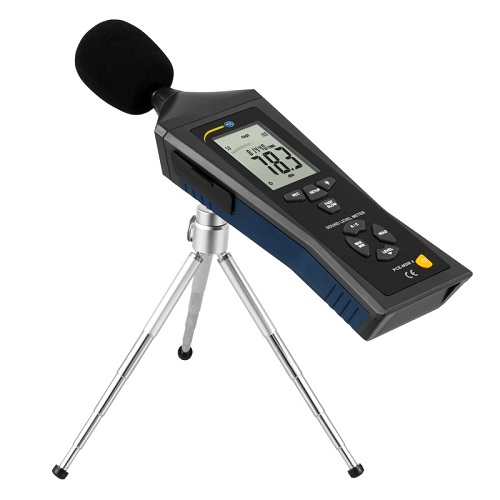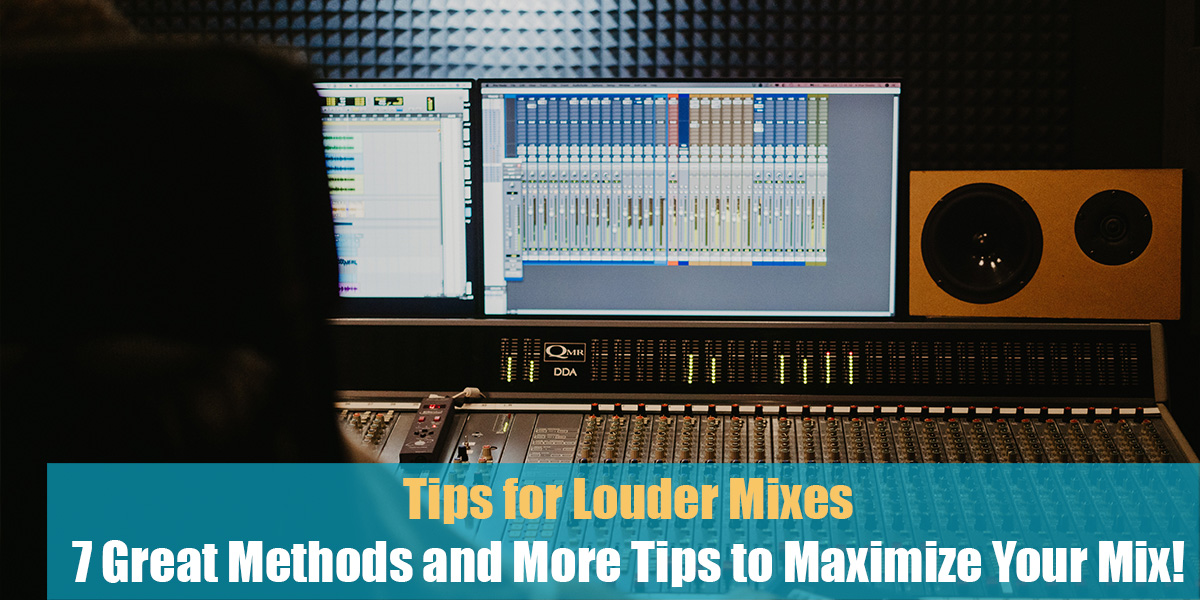What Are Decibels?
Introduction
To better understand how to measure audio loudness, it’s important to know the basics and the units used for measurement. Every sound—no matter how quiet or loud—is measured in decibels. Let’s take a closer look at how sound is measured and the ways it can be categorized:
First separation: Frequency – The main way to measure sound is by its frequency. Simply put, this is how high or low a sound seems. You might also hear this described as low-pitched or high-pitched sounds.
Second separation: Amplitude – This is where decibels come in. Decibels measure the pressure of the audio, which relates directly to loudness. In everyday life, we usually refer to this as the volume of a sound.

So What are Decibels?
The decibel (dB for short) is the unit used to measure how loud a sound is. The decibel scale can seem a bit unusual because the human ear is incredibly sensitive. Our ears can pick up everything from the faint brush of a fingertip on your skin to the roar of a jet engine.
The decibel is named after Alexander Bell, an inventor and pioneer in communications. The word itself has two parts: ‘deci-‘, meaning one-tenth, and ‘-bel’, which stands for a unit that represents a ratio of sound pressure levels.
To get a bit more technical, the decibel is a logarithmic way of describing the ratio between two values. Instead of using ‘bels’, we use decibels because sounds can vary over a huge range. Decibels let us express very large differences in sound using a more manageable set of numbers.
For example, the sound of a jet engine is about 1,000,000,000,000 times more powerful than the softest sound we can hear. That’s a huge difference!
On the decibel scale, the quietest sound possible (total silence) is 0 dB. A sound that is 10 times louder is 10 dB. A sound 100 times louder than near silence is 20 dB. A sound 1,000 times louder is 30 dB. Here are some common sounds and their decibel ratings:
- Normal conversation – 60 dB
- Busy city traffic – 85 dB
- Lawn mower – 90 dB
- Headphones at maximum volume – 105 dB
- Sirens – 120 dB
- Live concerts – 120 dB
- Sporting events – 105 to 130 dB
- Fireworks – 140 to 160 dB
- Firearms – 150 dB or more

What is the safe range of regular listening decibels?
The impact of being exposed to lower noise levels for a long time is similar to being around louder noises for shorter periods. To measure the noise around you, you can use a sound level meter (SLM). There are free SLM apps available for smartphones. Some of these apps can even help you estimate your maximum recommended daily noise dose, which supports better hearing health and prevention.
The U.S. Environmental Protection Agency (EPA) and the World Health Organization (WHO) recommend keeping environmental noise below 70 dBA over 24 hours (or below 75 dBA over 8 hours) to prevent noise-induced hearing loss. The EPA also sets limits for speech interference and annoyance—55 dBA for outdoor activities and 45 dBA for indoor activities.
Hearing loss can occur from a single loud sound, like a firecracker going off near your ear. More often, though, hearing loss develops over time from repeated exposure to loud sounds.
The louder the noise, the less time it takes for hearing loss to happen. The longer you are exposed, the greater the risk—especially if you are not using hearing protection or if your ears don’t have enough time to recover between exposures.
So, if you’re wondering what decibel level is dangerous, the answer is anything above 70 dB can harm your hearing. If you need to be around this level of noise, make sure to wear hearing protection to avoid problems in the future.

Best Listening Level for Mixing
We hear different frequencies in unique ways at different volume levels. So, how loud should you monitor if you want to get your mix just right? There’s no magical setting—but many mix engineers agree that setting your monitoring level to 85 dB is the sweet spot for larger control rooms. This level has become a standard in the industry. Why 85 dB? It’s because our ears hear the flattest frequency response at this volume, thanks to the equal loudness contours—basically, the way our brains interpret what our ears pick up.
To set your monitoring level, you’ll need a sound pressure level (SPL) meter. If you don’t own one, there are plenty of free SPL meter apps available for smartphones. Radio Shack also sells an affordable, reliable meter.
If your SPL meter lets you choose between different frequency weightings (such as A, C, or Z weighting), set it to “C weighted.” Next, play some pink noise through your system. Most DAWs (digital audio workstations) include a signal generator plug-in that can create pink noise.
Make sure you bypass any processing that might be anywhere in your audio chain. Raise the pink noise level until your DAW’s meter hits 0 dB on the master output. Then, pan the pink noise so it only plays through one speaker—left or right, whichever you prefer.
With your SPL meter at your listening position (the spot where your ears are when you mix), turn up your monitors until the SPL meter reads either 75 or 85 dB, depending on your room size. Mark this spot on your monitor control knob. Now you’ll know the ideal listening level for mixing every time you sit down to work.

Other Terminology Around Decibels
It’s important to understand the meaning and differences between some common decibel units: dBu, dBV, dBFS, and dB-SPL. Here’s some background to help you recognize them if you come across these terms.
dBu and dBV are both decibel units specifically used for measuring voltage. Unlike plain dB, these are true units because they can be converted to exact voltage values. dBu is referenced to 0.775 volts, meaning 0 dBu equals 0.775 volts. dBV is referenced to 1.0 volt, so 0 dBV equals 1.0 volt. To quickly convert between dBu and dBV, remember that dBu is always equal to dBV plus 2.21. The “V” in dBV is capitalized to make it clear and avoid confusion with “U” when writing.
dB-SPL measures sound pressure level in the air and is used to indicate the amplitude of sounds (audio pressure waves) traveling through the atmosphere. 0 dB-SPL is the threshold of hearing—the quietest sound the average human ear can detect. dB-SPL is also a unit because it can be converted to other pressure units, such as pascals.
dBFS, or decibels relative to Full Scale, is used for measuring digital audio levels. dBFS is a dimensionless quantity, meaning it is just a number and cannot be converted into other units. In a digital audio system, 0 dBFS is the maximum possible signal level (the clipping point). For this reason, dBFS values are always less than or equal to 0. For example, -10 dBFS means the signal is 10 dB below the system’s clipping level.
Conclusion
We’ve just explained what a decibel is, shared some insight into the typical ranges of everyday sounds, and discussed how understanding decibels can help improve your mixing. We also covered some related terms to help make things even clearer. We hope this gives you a better understanding of decibels and answers some key questions you might have had.
If you still have any questions about this topic, feel free to ask in the comment section below. We’ll be more than happy to elaborate!






